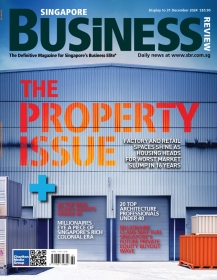
Lack of skilled sales people holding back Asian corporates
Asia Pacific companies have to step up their sales game, but a lack of sales skills is holding them back.
Understanding a situation is the first step towards improving it, and understanding is precisely what companies need right now in order to respond to the new economic currents sweeping the region, and in order to plan for what is ahead. After weathering the shockwaves of the financial crisis in the United States, companies in the Asia Pacific region find themselves in a real period of recovery for the first time in years.
Businesses keen to take advantage of this upswing need to first understand what barriers and limitations are holding them back, before they can address any weaknesses in order to move forward.
In order to gain a deeper understanding of sales in the region, Huthwaite conducted a comprehensive survey. This survey extended across sales professionals in the Asia Pacific, with questions about first and second quarter sales targets and forecasts, challenges, both internal and external, and the activities and roles played by sales managers. The survey turned up some significant insights, as well as differences between Southeast Asia and Australia.
Of the nearly 1,400 respondents, the majority had over 10 years of experience in sales. They had a range of job titles, even though all the jobs had strong sales components, with the majority being sales managers or general managers.
Many came from large companies, with over 1,000 employees with the remainder being fairly evenly spread through companies of smaller size. The companies they worked for were also fairly diverse, with a slight bias towards the information and communications technology (ICT) industry. Many reported that they worked in professional services rather than a specific industry.
For example, while the majority reported hitting their first quarter sales targets, a significant number of respondents (about 30%) reported that they had not.
When asked the greatest external challenge to reaching targets in the last quarter, Australian sales professionals named the poor economic climate as the number one challenge, while Southeast Asian sales professionals found that their number one challenge was facing increased competition. This is largely due to the increased economic activity in Southeast Asia, particularly as multinationals step up their operations in the region.
Southeast Asians have more choices than ever before, making selling to them a more competitive operation.
Respondents in both Southeast Asia and Australia, however, identified the selling skills of their sales teams as the biggest internal challenge to meeting first quarter targets, with head count and lack of mentoring, coaching and sales leadership skills as the other factors.
Looking forward, Southeast Asian respondents to the survey did, however, have a great deal of confidence, as a clear majority (80.2%) reported that they would reach or exceed forecast sales targets in the second quarter of 2011. This was stronger than respondents in Australia, where 74.9% predicted that they would do the same, and only 49.1% thought that they would hit targets.
Both sets of respondents placed a large emphasis on increased competition as the greatest external challenge faced in the second quarter of the year, although the economic climate and price focus of customers were also cited. Once again, the selling skills of the teams, head counts, and lack of mentoring, coaching, and sales leadership skills were the top internal challenges.
When asked what they spent the majority of their time on, the majority of respondents reported that they spent most of their time maintaining long term relationships with key customers and contacts (54%), which they viewed as having a great impact on their business (64%).
Sales professionals in Australia reported spending a great deal of time helping the team close late-stage deals, while they recognise that coaching specific skill sets with sales executives in the field would have a great impact on their business. Interestingly, Southeast Asian respondents spend the most time with under achievers when coaching the team (52.9%) while Australian respondents focus more on solid performers (51.4%)
The survey results paint an interesting picture, where sales managers are devoting too much time in last-stage deal closing activity (sales meetings and firefighting) instead of engaging in the coaching activity that their teams need, or in exploring early-stage opportunities, which is the best use of their time and experience.
The survey showed that only 26% of sales managers’ time is dedicated to these early stage opportunities, in favour of late-stage meetings to close deals (18%) and ‘firefighting’ to save deals (10.2%).
The survey also showed that nearly 50% of sales managers’ time was being spent supporting presentations or proposals – perhaps at the expense of the coaching opportunities that sales professionals realise are important, but find lacking.
The economic climate of recovery in the Asia Pacific is creating some unique challenges, and sales professionals have to face some residual customer resistance as well as competition from new players who realise the opportunities that the region presents. But companies within the region seem to be fighting a battle on two fronts, with an internal skill gap and shortage of skilled personnel inhibiting them from tackling their external challenges.
Greg Moore, Managing Partner, Huthwaite Asia-Pacific
























 Advertise
Advertise






